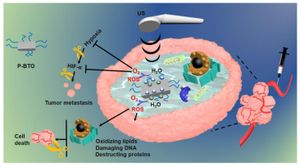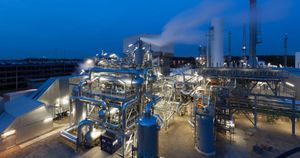Researchers have successfully developed a coastal bacterial consortium capable of enhancing lignin degradation, with findings highlighting the importance of low-abundant non-degrading species within the microbial community.
Lignin, the complex polymer found abundantly in plants, plays a pivotal role in the carbon cycling process. Its degradation is challenging but necessary for bioenergy production and climate change mitigation. Microorganisms often band together to form consortia, enhancing the efficiency of lignin biodegradation by complementing each other's metabolic capabilities. A recent study focused on isolations from the coastal intertidal wetlands of the East China Sea revealed fascinating insights about these synergistic interactions.
At the heart of this research is the coastal lignin-degrading consortium (LD) identified as being dominated by the bacterium Pluralibacter gergoviae, which accounted for over 98% of the population. While P. gergoviae was recognized as the primary lignin-degrader, the presence of low-abundance non-degrading species, including Vibrio alginolyticus and Aeromonas hydrophila, emerged as pivotal contributors to the consortium's overall functionality.
"Interestingly, the growth of LD consortium was superior to P. gergoviae alone," noted the researchers, emphasizing how these non-degraders play greater roles than previously thought. The study incorporated high-throughput sequencing and genome-scale metabolic models (GSMMs) to offer deep insights, particularly on the metabolic exchanges occurring between the degraders and non-degraders, showcasing complex inter-species interactions.
The methodology involved culturing the consortium over 40 transfers under controlled conditions, where physiological analyses showed substantial biomass growth and lignin degradation improvements. This indicated mutualistic relationships, where the degrader provided nutrients such as succinate and malate, which favored the growth of non-degraders. Conversely, the non-degraders supplied glycerol, alanine, and aspartate, proving mutually beneficial. "These low abundant non-degraders boost the performances of LD consortium," the team articulated, shedding light on previously unrecognized ecological roles.
The integrative approach resulted not only in the characterization of the taxonomic and functional distribution within the consortium but also demonstrated the opportunities for synthetic community construction aimed at optimizing lignin bioconversion processes. By successfully modeling interactions using GSSM, researchers simulated multi-species growth across varying conditions, indicating how balance within the community is integral for their metabolic success.
Findings from this research may pave the way for future work utilizing synthetic consortia to aim toward efficient manipulation of microbial communities for lignin utilization. The study contributes significantly to our growing knowledge of microbial ecology, especially focusing on the role of outliers, enhancing our capacity to design effective bioprocesses for lignin degradation.
Overall, the ability to leverage low-abundant species alongside primary degraders holds significant promise for enhancing biomass conversion efficiency, linking the apparent cooperative behaviors exhibited within these microbial consortia to broader environmental applications and sustainability efforts.



